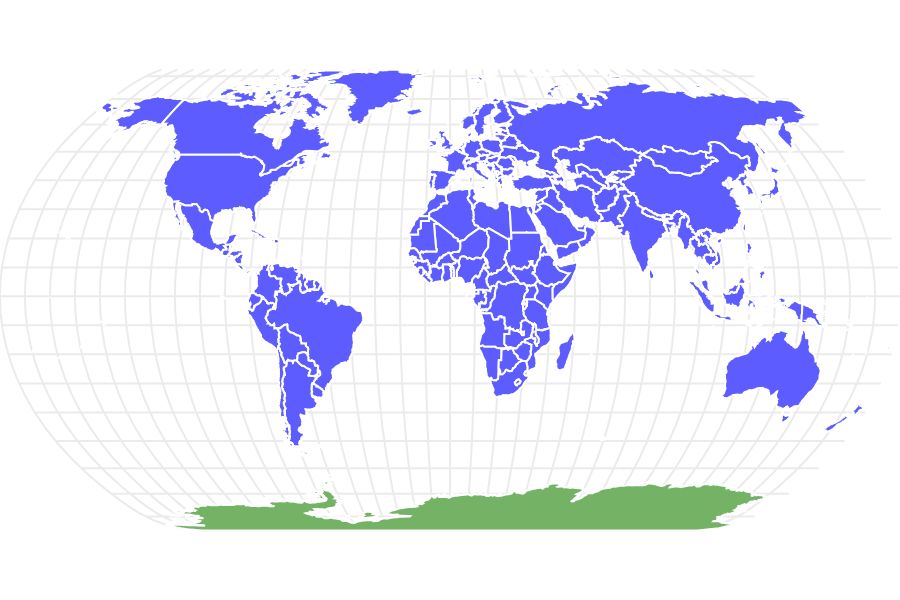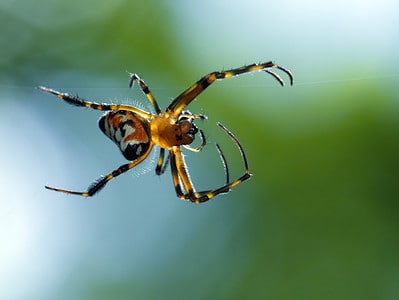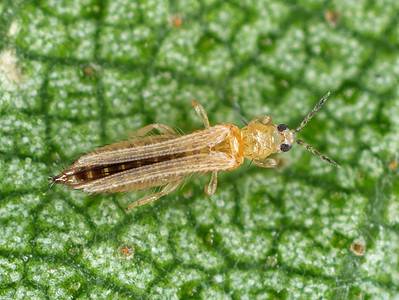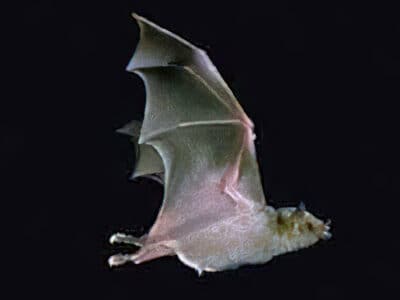Cuckoo
Cuculidae
Advertisement
Cuckoo Scientific Classification
- Kingdom
- Animalia
- Phylum
- Chordata
- Class
- Aves
- Order
- Cuculiformes
- Family
- Cuculidae
- Genus
- Cuculus
- Scientific Name
- Cuculidae
Read our Complete Guide to Classification of Animals.
Cuckoo Conservation Status
Cuckoo Facts
- Prey
- insects
- Estimated Population Size
- between 25 and 100 million birds
- Biggest Threat
- Shifting habitat
- Most Distinctive Feature
- Feet, which are zygodactyl (two inner toes face forward, two outer twos face backward)
- Wingspan
- Up to 42 inches for the largest species, the channel-billed cuckoo
- Incubation Period
- 11 to 13 days
- Habitat
- Forests, meadows, woodlands, and scrub areas.
- Predators
- Raptors (adult birds), Snakes and raccoons (nestlings)
- Diet
- Omnivore
- Average Litter Size
- 12 and 22 eggs each breeding season, spread among different nests.
- Type
- bird
- Common Name
- cuckoo
- Number Of Species
- 127
- Location
- Every continent except Antarctica
- Nesting Location
- Trees, bushes, the ground. Some species lay their eggs in other bird's nests.
View all of the Cuckoo images!
“The Channel-billed Cuckoo is the world’s largest cuckoo.”
The cuckoo family of birds is interesting for many reasons. While some of the facts about the bird are overblown, such as their reputation as parasitic birds, there is some truth to the lore. Some species of the family do lay their eggs in host nests, leaving the host to raise their young.
The family contains 127 species of birds, however, and many raise their young on their own. Some species lay their eggs in communal nests, sharing the responsibility. The parenting behavior of the cuckoo family is one of the most diverse and interesting facts about them.
Males make a distinctive call, which is the meaning behind the cuckoo name. When you hear the call, you will immediately realize why the bird is called the cuckoo.
3 Incredible Cuckoo Facts!
- Some species of lay their eggs in other birds’ nests. Once the young hatch, they push the host bird’s eggs out of the nest to eliminate competition for food.
- The roadrunner is a member of the cuckoo family. The greater roadrunner can reach speeds of 26 miles per hour on foot.
- The smallest cuckoo species, the little bronze cuckoo, weighs about 17 grams.

Where to Find Cuckoos
These birds can be found on every continent except Antarctica. They live in forests, grasslands, and other environments.
Scientific Name
The scientific name for the Cuckoo is Cuculidae.
Appearance
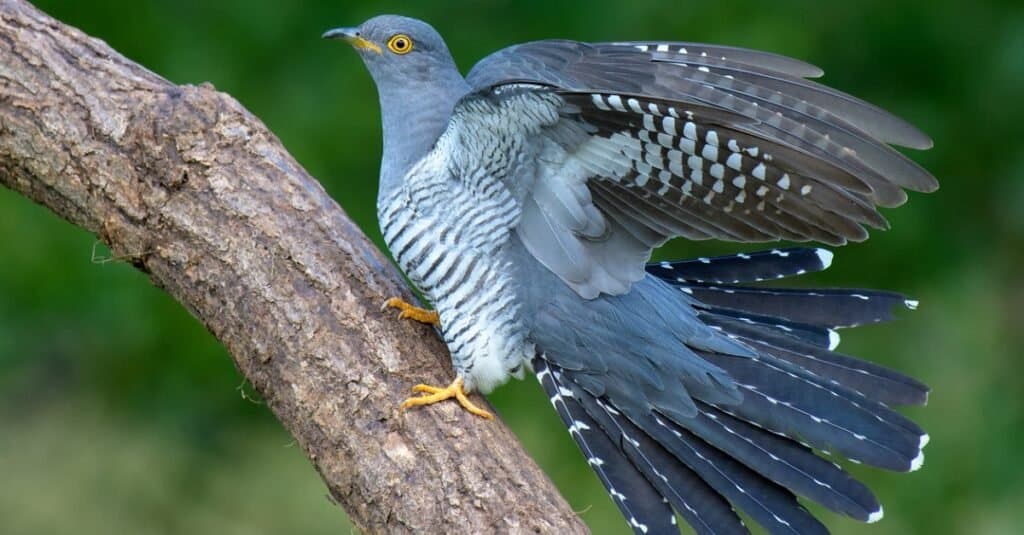
©iStock.com/Howard Kearley
With 127 species making up this family, it is difficult to accurately describe the bird. Some key identification points of the family are the feet and the tail feathers. All members of this family have zygodactyl feet, meaning its two inner toes point forward while its two outer twos point toward the rear of its body. Most species in this family have long tail feathers. The tail is used to guide the bird, both on land and in the air.
Evolution and Classification

Cuckoos indulge in brood parasitism, the practice of laying their eggs in other birds’ nests
©iStock.com/Sander Meertins
The evolutionary history of the cuckoo is shrouded in mystery owing to a dearth of fossil evidence. However, experts assert that the Dynamopterus velox, is an ancestor of the species. The bird became known to science owing to the discovery of its right humerus in France. It was larger than its present-day descendant.
The cuckoo belongs to the family Cuculidae, the only group of related organisms which form the order Cuculiformes. The family is a pretty large one consisting of 33 genera and 150 species. Included in that vast collective are anis, coucals, and roadrunners.
Several species are terrestrial and exhibit a strange habit of laying their eggs in the nests of other birds. This practice is known as brood parasitism and involves a species delegating the raising of its young to another often unwitting parent. The result is their hatchlings leading a pampered existence at the expense of the deceived bird’s very own offspring.
As part of the wider Otidimorphae, cuckoos are also related to the following avians:
Musophagidae: Members of this family are frugivorous and are especially fond of figs. In spite of poor flying skills, they are excellent sprinters and expert tree climbers. They are also especially vocal and are rather fond of each others’ company. They are also known for their feathers which contain the pigment turacin. Examples include the Guinea turaco and the great blue turaco.
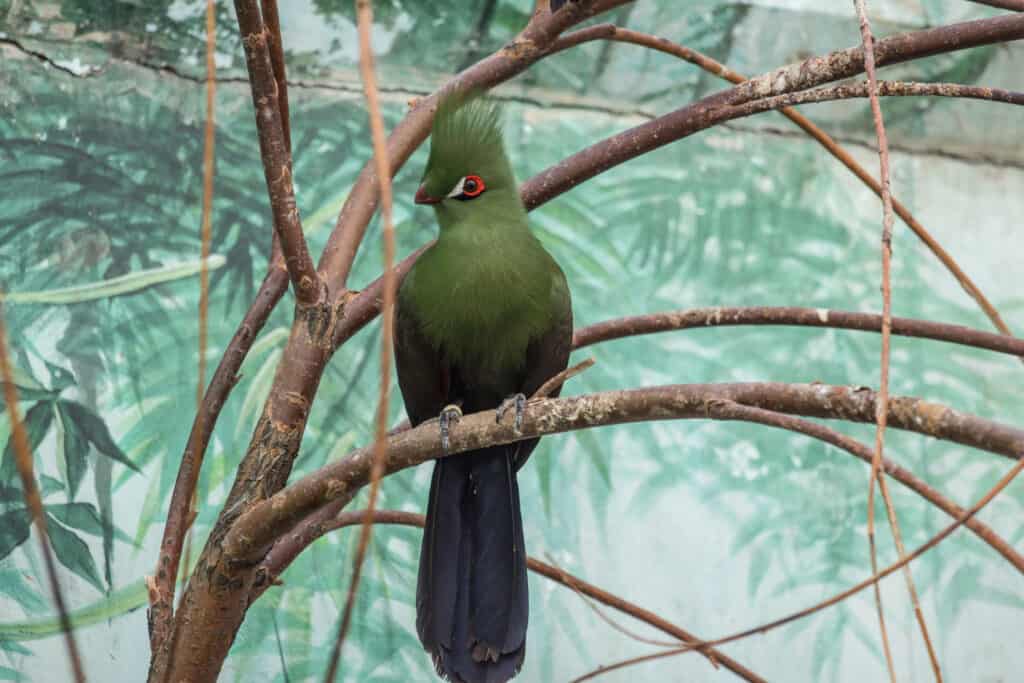
Turaco are frugivorous, endemic to Africa, and relatives of cuckoos
©iStock.com/dimakig
Otidiformes: Members of this family generally make their homes on vast grasslands and are omnivores with a fondness for seeds, fruits, leaves, and small animals. The entire order consists of bustards, floricans, and korhaans. Examples include the great bustard, the blue korhaan, and the Northern black bustard.
Types
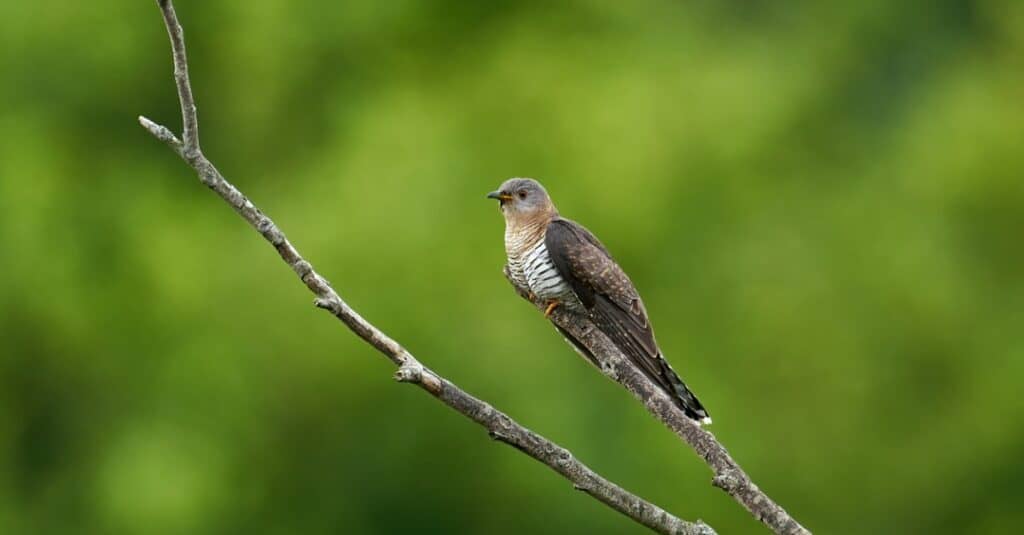
The common cuckoo spends a great deal of its time in Asia or Europe, but winters in Africa
©iStock.com/Denja1
- The common cuckoo (Cuculus canorus): Recognizable by its gray plumage and striped chest feathers, this avian is capable of growing to 13 inches in length. It also has a wingspan of 2 feet and prefers to spend the winter in Africa, spending the rest of its time in Asia or Europe.
- The African emerald cuckoo (Chrysococcyx cupreus): This cuckoo has a range which covers most of Africa south of the Sahara. The plumage of males is a shimmering green with hints of black and yellow, on the upper surface, and yellow on the chest. In females, it tends to be less brilliant with hints of red and brown.
- The blue coua (Coua caerulea): The key distinguishing features of this bird include dusky blue plumage, double patches in differing shades of vivid blue surrounding both eyes, and long dark tail feathers. It is capable of growing to 19.7 inches and weighing 2.1 ounces at the most.
- The Senegal coucal (Centropus senegalensis): As far as this species goes, both males and females have similar plumage. Their chest and chin feathers are ivory, their wings russet, and their crown and tail feathers, black. Members are capable of growing to a maximum of 15 inches in length.
- The violet cuckoo (Chrysococcyx xanthorhynchus): Males of this species have dark violet feathers and barred chest feathers in black and white. Females on the other hand have a gleaming brown-green plumage. The species lives in Southeast Asia and can be found in Bangladesh, India, and the Philippines.
Behavior
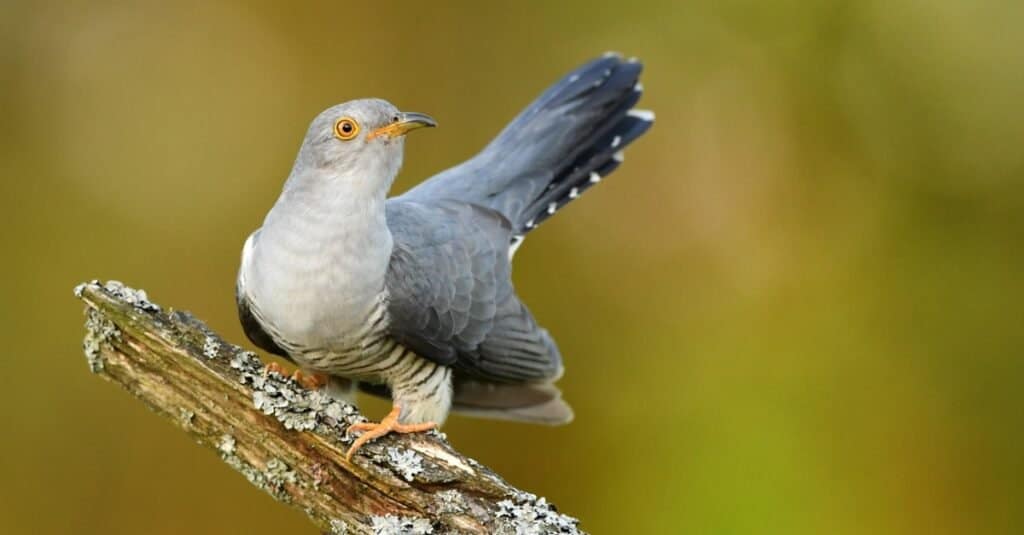
Cuckoos are generally solitary by nature and enjoy an omnivorous diet
©iStock.com/Piotr Krzeslak
One behavior that makes identification of the cuckoo easier is their solitary nature. These birds rarely gather with others, either in pairs or groups. The birds in this family are most often active during the day and shy away from humans. The eager birder will have more luck listening to the sound of its song than seeing it.
Diet
Insects, caterpillars, and fruit make up the bird’s diet.
Predators and Threats
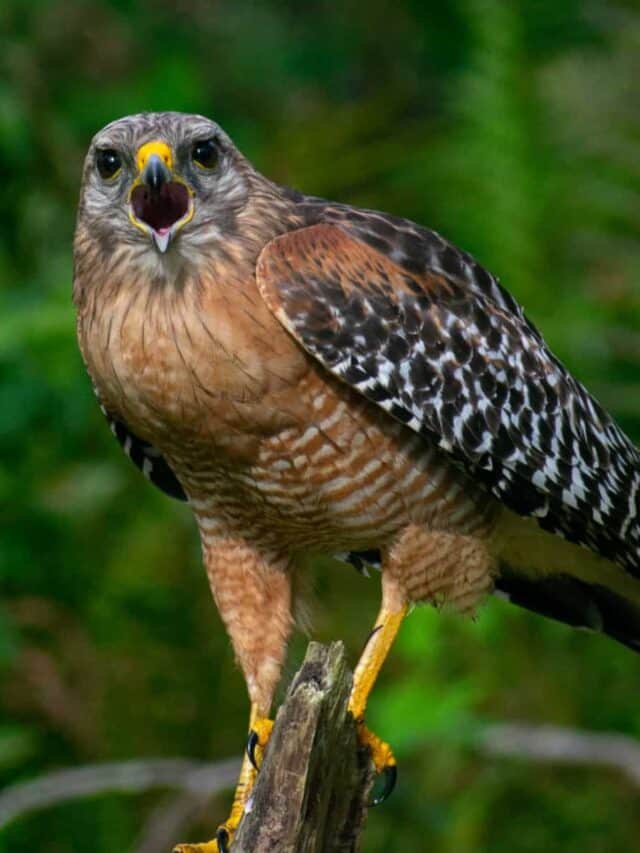
Hawks pose a threat to cuckoos which they hunt as prey
©Nick Bossenbroek/Shutterstock.com
Fledglings are vulnerable to raids on their nest by snakes and raccoons, while adult birds may fall prey to predatory birds, such as hawks.
Reproduction, Babies, and Lifespan
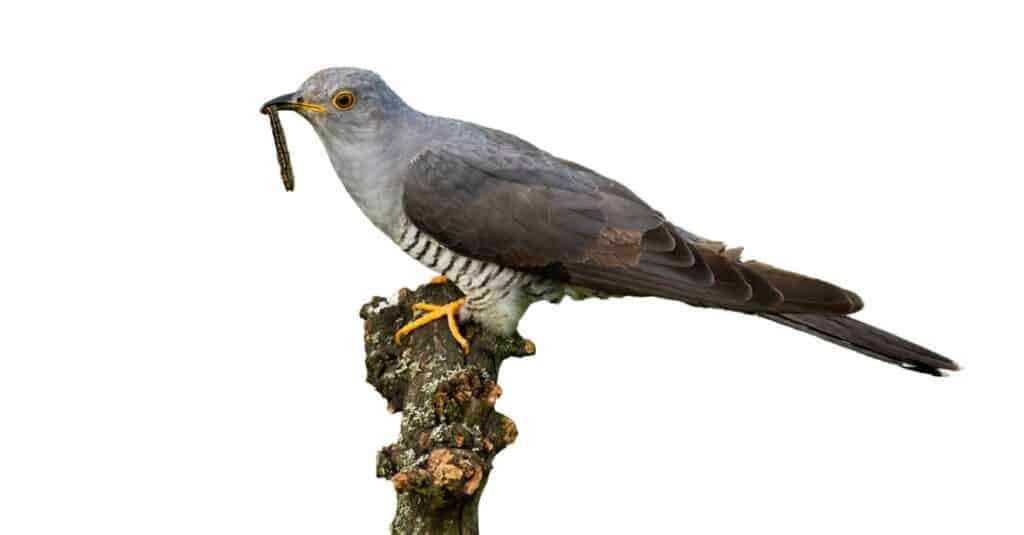
Different species of cuckoos exhibit different breeding and mating behaviours
©iStock.com/JMrocek
The various species of cuckoo birds have different mating and breeding behaviors. Some are monogamous, generally, the same species that are migratory. Some species lay their eggs in communal nests. The act that cuckoo birds are known for, which is laying their eggs in nests belonging to other birds, is not typical of the entire species. Some species are known for finding host birds, where they lay their eggs. The host bird then raises the cuckoo as its own.
Population
There are an estimated between 25 and 100 million birds.
View all 235 animals that start with CCuckoo FAQs (Frequently Asked Questions)
What is a cuckoo bird?
The cuckoo is a medium size bird, with species on every continent except Antarctica.
Do cuckoos migrate?
The majority of cuckoo bird species do not migrate. Some species, particularly those who live at higher latitudes, migrate for the winter. Of the migrating species, some make their migratory flights during the day, while others do the bulk of their flying at night.
Some migratory species of cuckoo birds have particularly long and grueling trips. Both the yellow and black-billed cuckoo migrate from North America, making a non-stop flight over the Caribbean Sea. The common cuckoo flies from Europe to central Africa, passing over the Sahara Desert and the Mediterranean Sea, and the long-tailed koel travels from New Zealand to Polynesia.
How fast does the cuckoo fly?
They can reach speeds of nearly 19 miles per hour when hunting.
What is the cuckoo's wingspan?
The shining bronze cuckoo is the smallest of the species, with a wingspan of 12.5 inches, while the largest, the Channel-billed cuckoo, has a wingspan of 42 inches.
When do cuckoos leave the nest?
They leave the nest around three weeks after hatching.
Where do cuckoo birds live?
In all parts of the world besides Antarctica, and in diverse habitats from woodlands to grassy plains.
What does a cuckoo bird look like?
The two most common identification markers of the species are its feet, with two toes pointing forward, and two toes pointing toward the back, and its long tail, used for steering. Otherwise, this diverse family of birds can range in color and size extensively.
What does a cuckoo bird sound like?
The song of the cuckoo is how it was named. The sound of the male’s song sounds like a repeating coo-coo.
Why are cuckoos bad?
Some species of cuckoos lay their eggs in host bird’s nests. When the young hatch, they push the remaining contents of the nest out, allowing the host to devote her energies to the young cuckoo. This can have a negative impact on the population numbers of other birds.
What are cuckoo birds known for?
The meaning of the cuckoo bird’s name is the sound that it makes, which it is famous for. Another interesting fact about the family is that some species raid other nests to lay eggs and take on the responsibility of their young.
Do cuckoos lay their eggs in other bird's nests?
Some species do, but not all.
Where do cuckoos go in the winter?
While some species migrate, either to southern areas or to lower elevations, others remain in the same territory all year.
Thank you for reading! Have some feedback for us? Contact the AZ Animals editorial team.
Sources
- Britannica, Available here: https://www.britannica.com/animal/cuckoo
- Audubon, Available here: https://www.audubon.org/field-guide/bird/common-cuckoo

